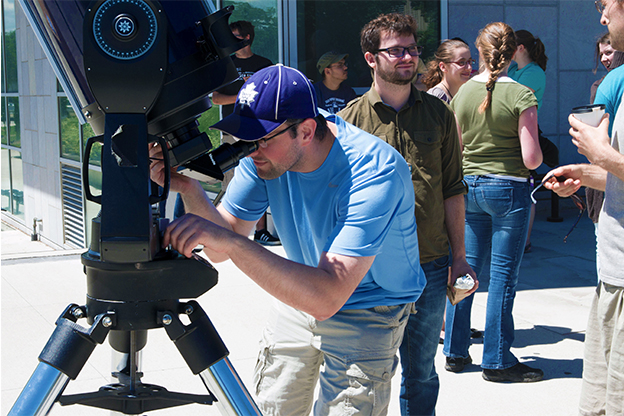Sidewalk Astronomy gives community a look at sun’s surface

Kazimierz Sliwa adjusts the 30 cm Meade telescope during Sidewalk Astronomy's solar observing event July 25 outside the Engineering Technology Building.
Graduate students in physics and astronomy kicked conventional wisdom to the curb last week when they invited the public to look directly at the sun.
Volunteers with McMaster Sidewalk Astronomy, a series of public sky-viewing events held on campus, pointed their 30 centimetre Meade telescope at the sun Thursday. Through the lens, members of the community were able to take a look at the surface of the sun (which should only be done with the right equipment), currently covered in sunspots.
Sunspots are temporary occurrences caused by intense magnetic activity on the sun’s surface and appear as dark spots. These spots are cooler (roughly 2700 degrees Celsius) than the rest of the sun (which averages about 5500 degrees Celsius).
Though they appear dark due to this contrast in temperature, in isolation the spots would actually be brighter than a full moon.
The group plans to host regular viewing events in the fall, an International Observe the Moon Night event in October and hopes to help the public observe the comet ISON in November or December.
Details can be found on the McMaster Sidewalk Astronomy webpage, Facebook and Twitter.
Sidewalk Astronomy is supported by SPICES – a funding program that encourages graduate students to initiate and develop intellectual communities and engaged scholarship.

